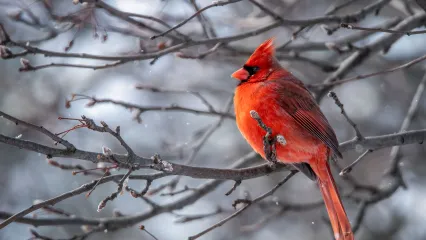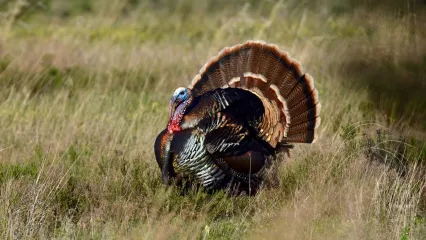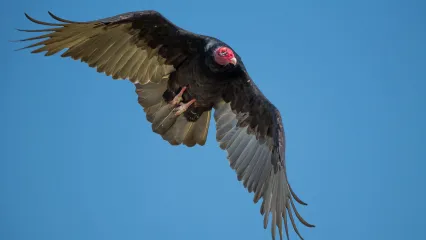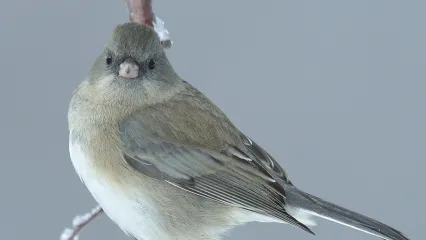
Description
This distinctive and familiar bird is one of the most sought after birds to backyard bird feeders. Males and females have very different plumage, but both sexes have a crest, a thin black “mask” around the bill and eyes, and a thick, orange-red bill. The male’s plumage is bright red over its entire body. The female has reddish plumage on the tail, wings and crest, but warm gray-brown plumage on the back, head and chest. Few birds resemble the northern cardinal and no other Oklahoma bird has the cardinal’s thick, orange-red bill. Both the tufted titmouse and cedar waxwing have crests, but these birds lack reddish plumage and have bills that are very different from the cardinals.
Size
Approximately 8.75 inches long.
Habitat
This is a very common bird of oak woodlands, thickets, shrublands, forest edges, fencerows and riparian woodlands. It is common in many urban and residential neighborhoods as long as there are trees and large shrubs for cover and nesting. Northern cardinals are found almost statewide except for the western half of the Panhandle. This species is found year-round in Oklahoma.
Life Cycle
At feeders, cardinals feed on black-oil sunflower seeds, safflower seeds, millet and milo. Away from feeders they forage for a wide variety of seeds, some insects and some berries.
How To Observe
Northern cardinals usually travel and feed in small flocks of two to 15 birds during the winter. In prolonged periods of snowy weather, they may form larger flocks of as many as 40 birds. Cardinals usually feed on or near the ground, often under or near the cover of shrubs. They visit all types of feeders and will take seeds (especially sunflower seeds) scattered on the ground, placed on a low platform-type feeder or placed in a hanging or pole-mounted feeder.


